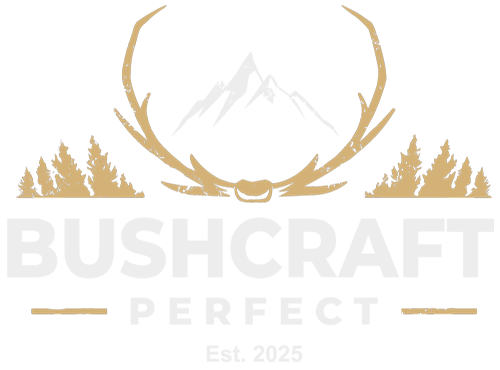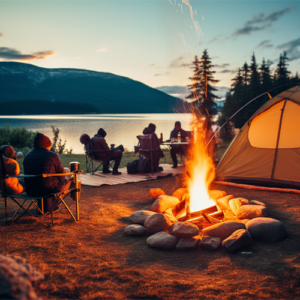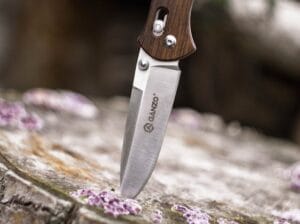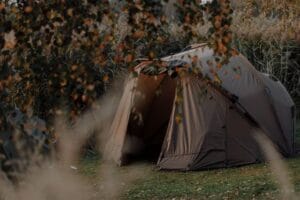When to Choose a Large Bushcraft Knife
Large bushcraft knives aren’t everyone’s first choice, but there are times when a bigger blade just makes sense.
While a standard bushcraft knife usually measures around 4-5 inches, a larger knife—think 6-10 inches—brings a different set of advantages to the field.
You’ll find that the extra length and heft can be beneficial for certain tasks, especially when you’re dealing with wood processing or need a blade that can double as a survival tool.
That said, bigger blades also come with trade-offs, and it’s worth understanding when and why to choose a large bushcraft knife.
Chopping and Batoning: Where Big Blades Shine
One of the main reasons I reach for a large bushcraft knife is for wood processing.
The extra blade length gives me the leverage needed for chopping through thicker branches and small logs. While a hatchet or axe might be more efficient for splitting large pieces of wood, a large knife can still get the job done, especially if you’re trying to keep your gear to a minimum.
I’ve used my larger bushcraft knives to baton wood for fire prep, and the added weight makes it much easier to split wood without needing excessive force.
Chopping is another area where a large knife stands out.
Whether I’m clearing brush or trimming branches to build a shelter, the longer blade allows for deeper cuts with each swing. A smaller knife just can’t match the chopping power of a blade that has more mass and length.
However, this doesn’t mean a large knife replaces an axe or machete—it just offers a good compromise when you don’t want to carry multiple tools.
Versatility in the Field: Multi-Purpose Use
A large bushcraft knife can perform a variety of tasks that might normally require separate tools.
I’ve used larger knives for digging, scraping, and even as a makeshift pry bar when needed. The robust build and length can handle more stress than smaller blades, making them suitable for heavier tasks that would damage a less substantial knife.
That said, you do sacrifice some precision. Fine carving, notching, and other detailed tasks are harder to control with a longer blade.
I find that a large knife works best as part of a two-knife setup, where a smaller blade can handle the finer work.
This way, I can take advantage of the larger knife’s chopping and splitting capabilities while still having a more precise tool for detailed work.
Blade Design: Choosing the Right Shape and Grind
Blade shape and grind matter more when you’re dealing with larger knives.
For bushcraft, a drop point or clip point blade tends to work well because it offers a balance between a strong tip for piercing and a curved edge for slicing.
The grind plays a big role in how well the knife performs different tasks. A flat grind or convex grind is ideal for larger knives because it adds strength to the edge while still allowing for decent slicing ability.
Scandi grinds, while great for smaller bushcraft knives, aren’t as practical on larger blades due to the way they perform under heavy use.
I prefer a thicker spine for a large bushcraft knife, around 5-6 mm. This thickness adds the durability needed for batoning and heavier tasks while still being manageable for general use.
Thinner blades tend to flex too much and can be prone to damage when pushed beyond their limits.
Handle Design: Comfort and Control
Handle comfort becomes even more important with a larger knife. If you’re using the knife for chopping or extended cutting tasks, you’ll notice discomfort quickly if the handle isn’t shaped well.
I look for handles that provide a secure grip with some texture, like Micarta or G-10, to avoid slipping. A slight palm swell or finger guard can also help keep the knife in place during heavy use.
A longer handle is useful on larger knives because it allows for different grip positions.
I often find myself choking up on the handle for finer tasks, while moving my hand toward the end for chopping.
This versatility in grip positions helps make a large knife more manageable for a variety of tasks, even those that are typically reserved for smaller blades.
Practical Considerations: Weight and Carrying Options
The downside to a large bushcraft knife is the added weight and bulk. If you’re planning to hike long distances or need to keep your gear as light as possible, a big knife can start to feel like a burden.
I’ve found that carrying a large knife on a belt sheath works well if the sheath is sturdy and keeps the knife secure.
Some people prefer carrying larger knives on a pack to reduce the weight on their hips, which can be a good option if you’re already carrying heavier gear.
Sheath quality becomes more important with larger knives. I prefer Kydex or thick leather sheaths with multiple attachment points for versatility.
A good sheath will keep the knife from shifting or slipping, which is crucial when you’re carrying a bigger blade.
When to Avoid a Large Knife
While large bushcraft knives excel at heavy tasks, they’re not always the best choice for detailed work or when weight matters.
If I know I’ll be doing a lot of carving or intricate tasks, I stick with a smaller knife. A larger blade is also less practical for everyday carry, as it can be cumbersome to wear on a belt or keep in a pack.
In situations where weight is a priority, I might choose a smaller fixed blade or a folding knife to save on bulk.
My Experience with Large Bushcraft Knives
I’ve used a variety of large bushcraft knives over the years, and the ones that stand out have a good balance between weight, blade length, and handle comfort.
1. Ka-Bar Becker BK9
The Ka-Bar Becker BK9 is a well-regarded large bushcraft knife that offers a great balance of durability and performance.
Its 9-inch 1095 Cro-Van steel blade has enough length and weight to make chopping and batoning tasks much easier. The blade holds an edge well and is easy to sharpen in the field, making it reliable for extended outdoor use.
The handle is made from durable grivory, providing a secure grip even during heavy-duty tasks, though some users may prefer to upgrade to aftermarket Micarta scales for added comfort.
The included nylon sheath is functional and offers a few carry options, but it’s not as robust as leather or Kydex alternatives.
Pros: Strong 1095 Cro-Van steel blade, effective for chopping, easy to sharpen.
Cons: Stock sheath could be sturdier, grivory handle may feel basic for some users.
2. ESEE Junglas
The ESEE Junglas stands out as a heavy-duty tool with a 10.38-inch 1095 high carbon steel blade.
The extra blade length allows for powerful chopping and wood processing, almost like a small machete, but the knife still provides decent control for general bushcraft tasks.
The full-tang design adds to its robustness, and the Micarta handle is contoured for a comfortable grip during extended use. The knife’s edge retention is solid, although it does require regular maintenance to prevent rust due to the high carbon steel.
The Kydex sheath is a strong point, offering multiple carry options and a secure fit. The Junglas is on the heavier side, so it’s best suited for those who need a tool that can take on large tasks.
Pros: Excellent chopping power, durable Micarta handle, high-quality Kydex sheath.
Cons: Heavier than most bushcraft knives, requires regular maintenance to prevent rust.
3. Cold Steel Trail Master
The Cold Steel Trail Master is another strong performer in the large bushcraft knife category, featuring a 9.5-inch SK-5 high carbon steel blade.
The blade’s clip point design allows for effective piercing, while its weight makes it great for chopping and batoning.
The knife’s edge retention is commendable, and the black coating helps resist corrosion, though it does wear off with use. The Kray-Ex handle provides a comfortable, shock-absorbing grip that helps reduce fatigue during extended use.
The included Secure-Ex sheath is durable and offers solid retention, but some users may prefer a sheath with more attachment options.
Pros: Effective for heavy-duty tasks, strong edge retention, comfortable grip.
Cons: Coating wears off with use, sheath lacks multiple attachment options.
Final Thoughts
Large bushcraft knives have their place in the field, especially when you need a tool that can handle heavy tasks without resorting to carrying multiple items.
The added length and weight make them well-suited for chopping, batoning, and general wood processing, but they come with trade-offs in precision and portability.
If you’re planning to use a large knife, consider pairing it with a smaller blade for versatility. When chosen carefully, a large bushcraft knife can be a valuable addition to your kit, offering the ability to tackle bigger jobs with confidence.
You might as well be interested in
-

Top Rated Bushcraft Knives. Do They Perform in the Field?
What Makes a Bushcraft Knife Top Rated? When I look for a top rated bushcraft knife, I’m not interested in hype. I want a knife…
-

Large Bushcraft Knives: When Bigger Blades Make Sense in the Field
When to Choose a Large Bushcraft Knife Large bushcraft knives aren’t everyone’s first choice, but there are times when a bigger blade just makes sense.…
-
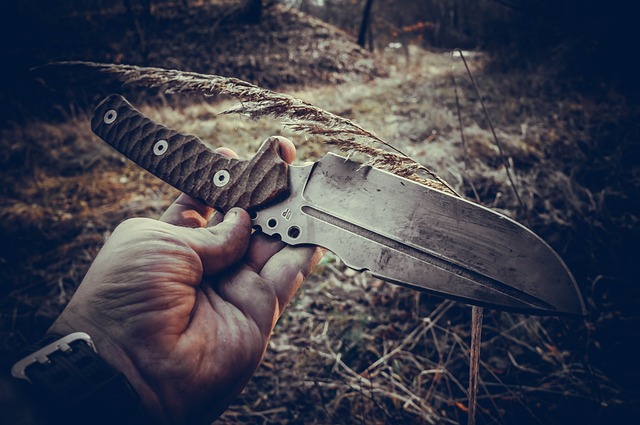
Japanese Bushcraft Knives: Why They’re Different and Worth Considering
Why Consider Japanese Bushcraft Knives? Japanese bushcraft knives bring a different flavor to outdoor tools. Rooted in centuries-old craftsmanship, they reflect a blend of traditional…
-

The Right Fixed Blade Bushcraft Knife: What to Look For and Why It Matters
Why a Fixed Blade Bushcraft Knife Is the Right Choice When it comes to bushcraft, a fixed blade knife is my go-to tool. It’s reliable,…
-
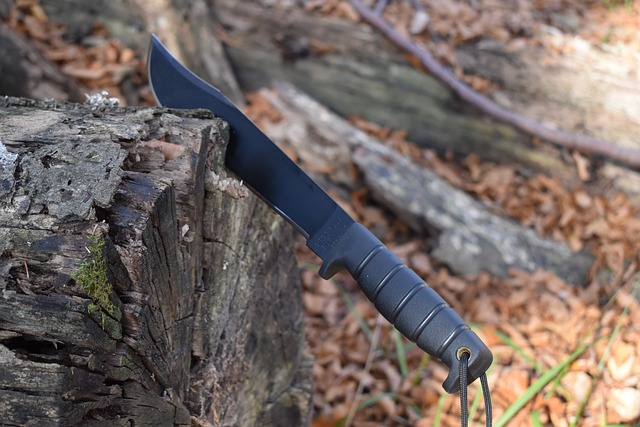
Dutch Bushcraft Knives: What Makes Them Stand Out and Are They Worth It?
What Are Dutch Bushcraft Knives? Dutch Bushcraft Knives (DBK) started as a YouTube channel run by two bushcraft enthusiasts from the Netherlands who share a…
-

Why Custom Bushcraft Knives Are Worth the Investment: What to Know Before Buying
Why Choose a Custom Bushcraft Knife? When it comes to bushcraft, I rely on my knife for nearly everything, from carving and food prep to…
-
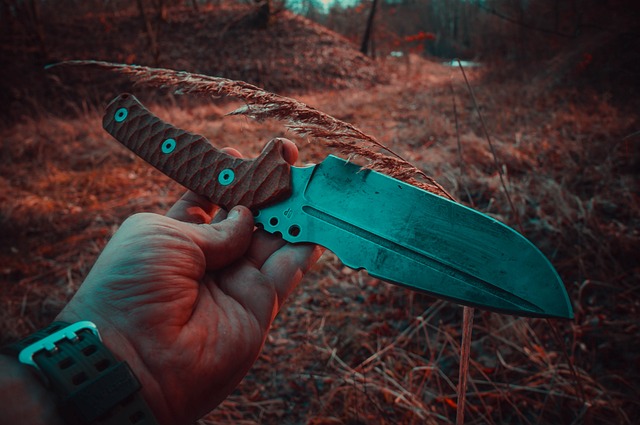
Choosing a Bushcraft Survival Knife: What You Need to Know Before You Buy
Why a Bushcraft Survival Knife Matters When it comes to bushcraft and survival, a good knife is more than just a tool—it’s an extension of…
-

Finding the Right Bushcraft Sheath Knife: What Matters and What Doesn’t
Why Choose a Bushcraft Sheath Knife? When it comes to bushcraft, a sheath knife is the tool I reach for first. Unlike folding knives, a…
-
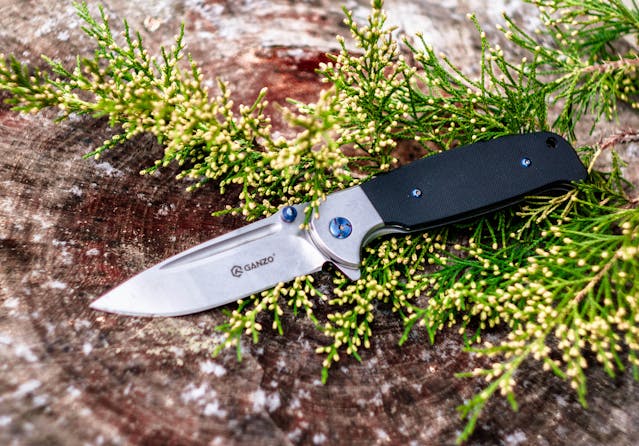
Choosing a Bushcraft Folding Knife: What Works and What Not
Why Use a Bushcraft Folding Knife? When it comes to bushcraft, I usually prefer a fixed-blade knife for its strength and reliability. But there are…
-

What to Look for in Good Bushcraft Knives: My Top Picks and Tips
What Makes a Good Bushcraft Knife? A good bushcraft knife is one of the most important tools in my kit. It’s not just about having…
